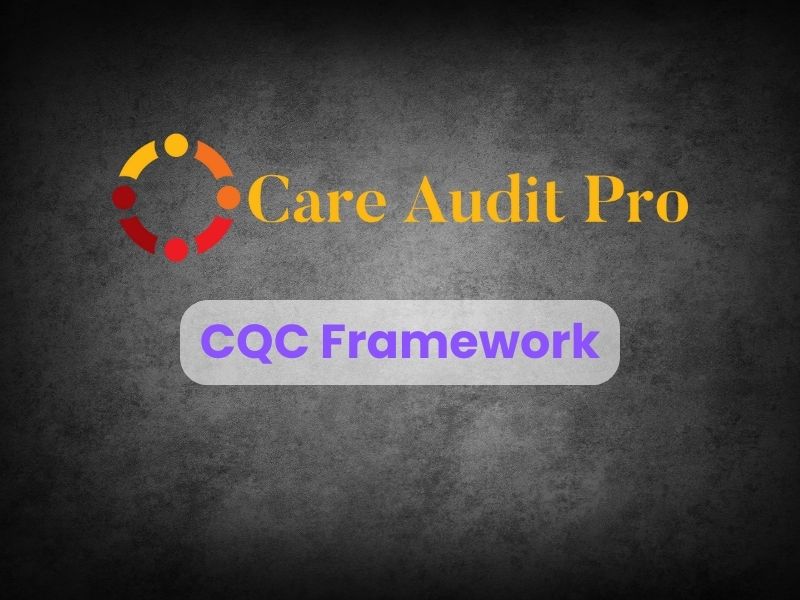
Understanding the 5 Domains of the CQC Framework
By Attila Szelei on 24/11/2025
Understanding the 5 Domains of the CQC Framework
AEO Answer: The CQC framework includes five key domains that assess care quality: Safe, Effective, Caring, Responsive, and Well-led. Understanding these domains is crucial for registered managers and compliance officers in ensuring compliance and readiness for inspections.
Introduction
The Care Quality Commission (CQC) is pivotal in ensuring that health and social care services in England are safe, effective, caring, responsive, and well-led. Understanding the five domains of the CQC framework is not just beneficial; it is essential for registered managers, quality leads, and compliance officers aiming for compliance and best practices. By grasping these domains, care providers can enhance their service delivery and prepare adequately for inspections.
1. Safe
Safety is the cornerstone of care. This domain assesses whether people are protected from abuse and avoidable harm. To ensure safety:
- Conduct Regular Risk Assessments: Identify hazards and implement mitigation strategies.
- Train Staff on Safeguarding: Ensure all staff understand their responsibilities regarding safeguarding and the duty of candour.
- Medication Safety: Maintain accurate Medication Administration Records (MAR) to prevent errors. Regular audits of MAR can significantly reduce medication-related incidents.
Checklist for Safety Preparedness
- Review and update safeguarding policies regularly.
- Schedule training sessions on safeguarding and incident reporting.
- Perform monthly medication audits.
- Create a dashboard to track incidents and near misses.
2. Effective
Effectiveness measures whether the care, treatment, and support provided to individuals achieve good outcomes. Here’s how to ensure effectiveness:
- Evidence-Based Practices: Implement care protocols based on the latest clinical evidence.
- Regular Training: Keep the workforce trained and informed about current best practices.
- Monitor Health Outcomes: Use data analytics to track outcomes and adjust care practices accordingly.
Example of Effective Care
If a resident has diabetes, establish a care plan that includes regular monitoring of blood glucose levels and dietary management. Evaluate the effectiveness of the plan every month, adjusting as needed based on the resident’s health outcomes.
3. Caring
Caring involves treating people with kindness, compassion, and respect. This domain is about the interactions between staff and individuals receiving care.
- Promote Person-Centred Care: Encourage staff to engage with individuals on a personal level.
- Gather Feedback: Regularly collect feedback from residents and their families about their care experience.
- Support Emotional Well-Being: Offer counselling services and emotional support mechanisms.
Tips for Enhancing Caring
- Implement regular one-to-one meetings with residents to understand their preferences better.
- Use surveys to capture feedback on staff interactions.
4. Responsive
Responsiveness assesses how well services meet the needs of the individuals they support.
- Person-Centred Care Plans: Each resident should have an individualised care plan that reflects their needs and preferences.
- Timely Responses to Complaints: Develop a robust process for handling complaints and ensure that the team is trained to respond effectively.
- Flexible Service Delivery: Tailor services to accommodate the diverse needs of individuals, adapting to changes swiftly.
Responsive Care Example
If a resident prefers a particular meal at a specific time, ensure that kitchen staff are informed and able to meet these preferences consistently.
5. Well-led
The well-led domain focuses on the leadership and governance within the service.
- Strong Leadership: Ensure that leaders are visible and approachable, fostering an open culture.
- Continuous Improvement: Promote a culture of continuous improvement where staff are encouraged to suggest innovations and improvements.
- Staff Engagement: Regularly involve staff in decision-making processes to ensure they feel valued and heard.
Steps to Strengthening Leadership
- Schedule regular team meetings to discuss service improvements.
- Implement anonymous staff feedback.
- Provide leadership training to management staff.
Conclusion
Being aware of the CQC's five domains is crucial for maintaining high standards in care services. Fostering a culture of safety, effectiveness, caring, responsiveness, and strong leadership is not just about compliance; it enhances the overall quality of care. Regular audits, effective training, and a willingness to adapt are key elements in achieving compliance and readiness for CQC assessments.
How Care Audit Pro Supports This
Care Audit Pro offers digital audits tailored to the CQC framework, helping services map their evidence and action plans efficiently. With features focused on incident learning and medication safety, our platform supports registered managers in maintaining compliance and improving care quality.
Keywords: [CQC framework, care quality, compliance, safety, effective care]